|

It's no wonder the work of Rod Heft shares a sensibility with the German
Bauhaus where, for example, our man Kandinsky taught from 1922 to the
end. When the Bauhaus was closed in 1933, under Nazi pressure, its world
-class faculty scattered. (Kandinsky went to France and, being in his late
60s, he was reluctant to move again or to teach in English when Josef
Albers invited him to Black Mountain College in North Carolina.) The
Bauhaus's first and third directors, Walter Gropius and Moholy-Nagy, were
among those who came to the U.S. The Bauhaus design
principles—including those of Kandinsky--came with them, and served as a
foundation for avant-garde design and architecture in the U.S. In 1937,
Gropius, who was at Harvard, recommended Moholy-Nagy as founder of
"The New Bauhaus" in Chicago, the Institute of Design at Illinois Tech. A
veteran of the Canadian Navy, Rod Heft, the focus of our piece this month,
attended The New Bauhaus on the GI Bill.
At this new Chicago Bauhaus, Heft studied under, among other greats,
Buckminster Fuller and Charles and Ray Eames. His architecture teacher
was Serge Chermeyeff, who played a major role in what came to be the
International Style; his early work was influenced in part by Russian
Constructivist architecture.
*
Wandering around town one afternoon in 2012, I turned onto a side street
and saw a sign on a Senior Living facility that directed the public through a
rather plain entry way to an art show. I guessed the artworks could range
from just-for-fun to outstanding or even collectible, but I never expected
what I found: an extensive, beautifully mounted exhibition of smallish
collages, all of them unmistakably informed by the Bauhaus, and several of
them of Russian Constructivist ilk. Here and there, I saw dynamic elements
of Kandinsky, Schlemmer, or Albers. The artist statement of Rod Heft
confirmed:
"I graduated in Architecture at the Institute of Design (Chicago Bauhaus) in
1949. From 1950, until retiring in 1988, I practiced architecture in Palo
Alto, California, designing schools and high-tech electronic manufacturing
facilities throughout the Western States."
Heft's daughter, Lisa, a treasure trove of information on her father, also
cites her father's work as a young architect for Stanford University and
Hewlett Packard. Lisa sent me a charming description of the pre-tech
California Heft helped to develop:
Those early decades as an architect in California were a time when new
technology was being invented and architects were therefore with their
tech clients inventing & exploring new ways of designing / creating
environments for those technologies. It was also a time when Silicon
Valley was mostly apricot orchards, creeks and lots of open space.
Eventually Rod started his own firm with some dear colleagues called
Comprehensive Architectural Services (CAS Architects) - continuing
projects for companies like Fairchild Semiconductor and other high
-tech manufacturers.
After retirement, Heft volunteered to build sets for a professional theatre
and to play jazz piano in the afternoons for the patients in the Alzheimer's
unit of his senior facility.
*

Rod Heft had his first art show when he was 89 years old, and then
continued having shows into his 90s.
The story goes: Heft went to Buffalo, New York, to visit New Bauhaus
classmate Harold Cohen, an important figure in the design world. Cohen
was now 88, like Heft. Heft was inspired to find his friend still making
block prints and silk screens, and it got him thinking. Heft had at one time
experimented with painting abstracts in acrylic, but painting needed more
space than he had in his senior apartment. His daughter proposed the
collages instead. She set him up with the materials and tools he needed,
and together they created a dedicated area in his living space. He typically
made one collage per week, and left many up on the walls around him to
inspire his next one.
Lisa wrote: "I think his abstracts look like jazz." I hear that Heft wasn't fond
of a viewer's saying one of his collages "looked like" a house, or a tree, and
so on. In other words, an image was abstract, so it looked like itself. In
another of his artist statements, Heft said: "Unlike the majority of collages
that are done with pictures, patterns, and textures, my aim is to keep them
abstract and non-objective, using only colors and shapes." Heft kept all the
pieces of the paper he cut from and used those leftover shapes in his art as
well.
He apparently rotated his work before completing a piece, saying there was
not a "right" way to hang it. He thought his finished pieces should look
good any direction you hung them. It was good to hear this because,
although he didn't sell his work, Rod gave me one collage as a gift in 2012
during one of our visits; many years later I saw a photo of that piece hung
with others, and sure enough, I had turned "mine," well, a different way.
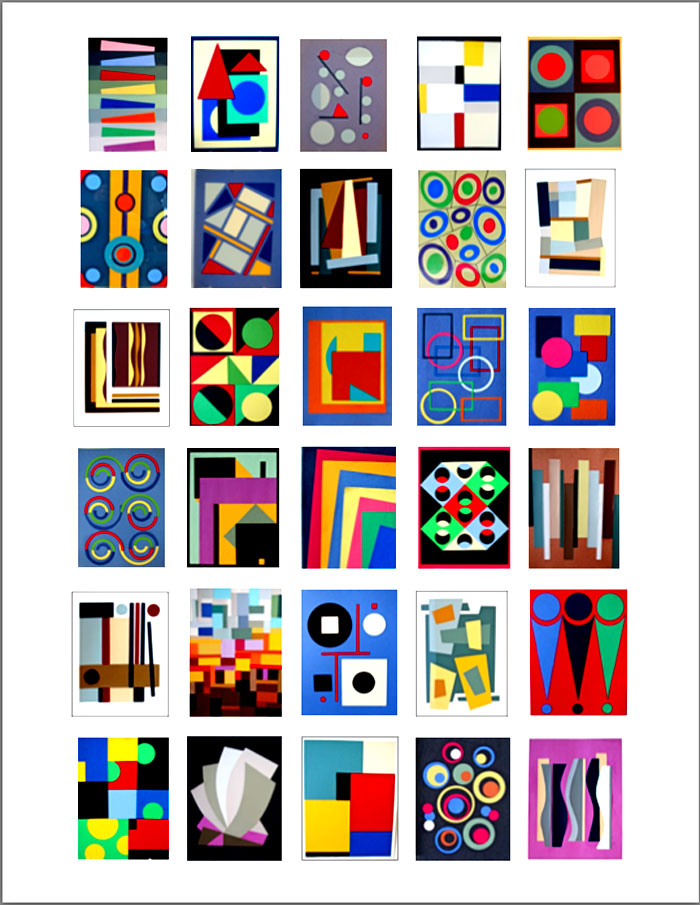
Collages by Rod Heft. Photo by Lisa Heft
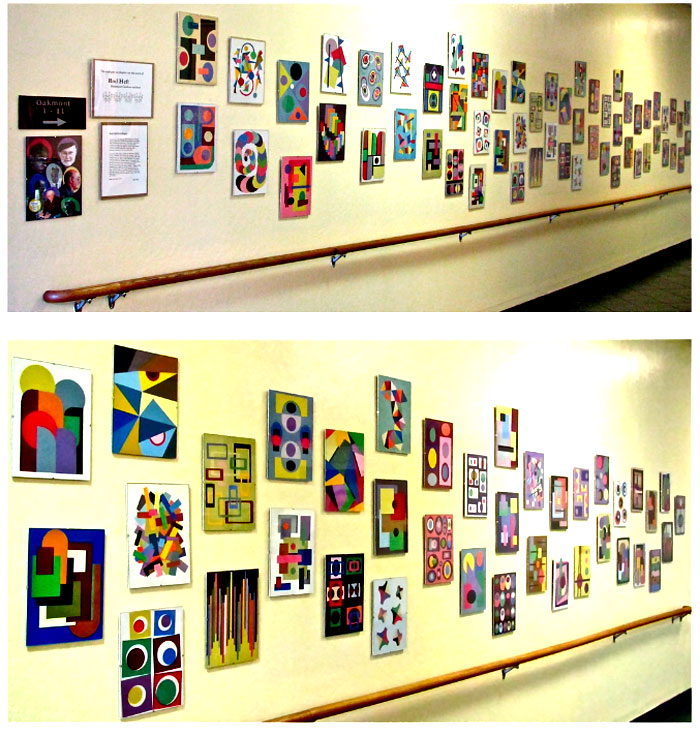
Art show of collages by Rod Heft 2013. Photo by Lisa Heft.
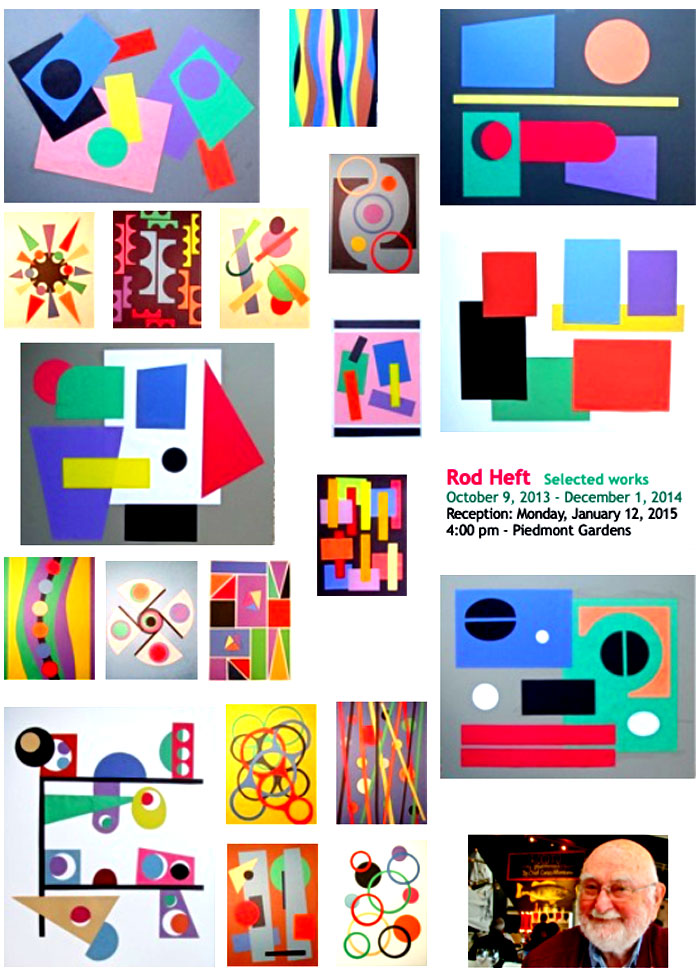
Collages by Rod Heft 2013-14. Photo by Lisa Heft
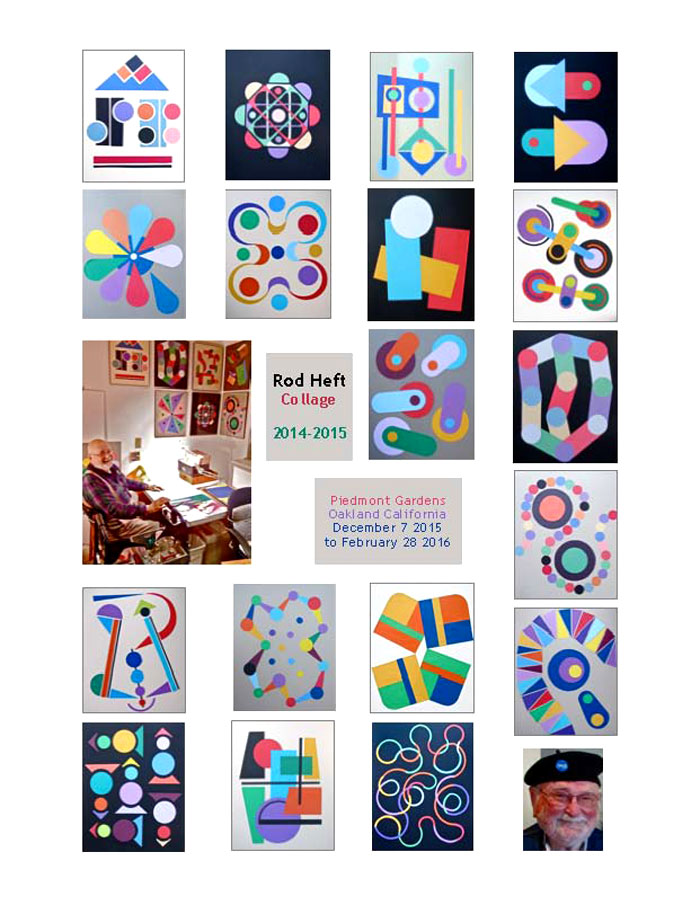
Collages by Rod Heft 2014-15. Photo by Lisa Heft
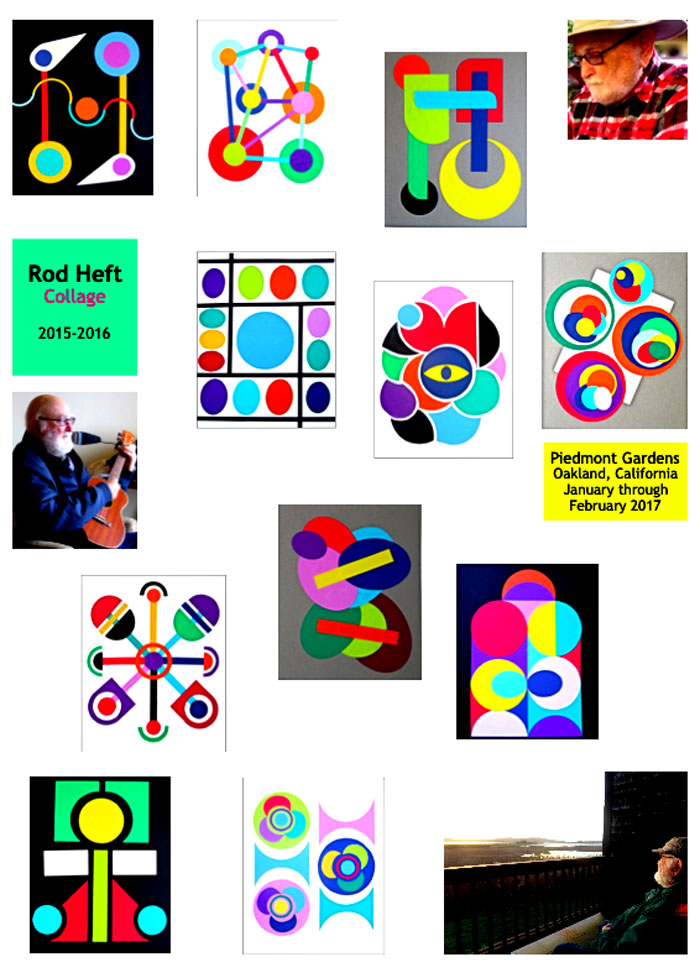
Collages by Rod Heft 2015-16. Photo by Lisa Heft
Rod Heft died in 2019 at 95—Lisa says he joked that he was going to The Big Jazz Club in the Sky—and left his endlessly creative, rigorous collages
to challenge, surprise and delight us with an experience of the living
Bauhaus.
|